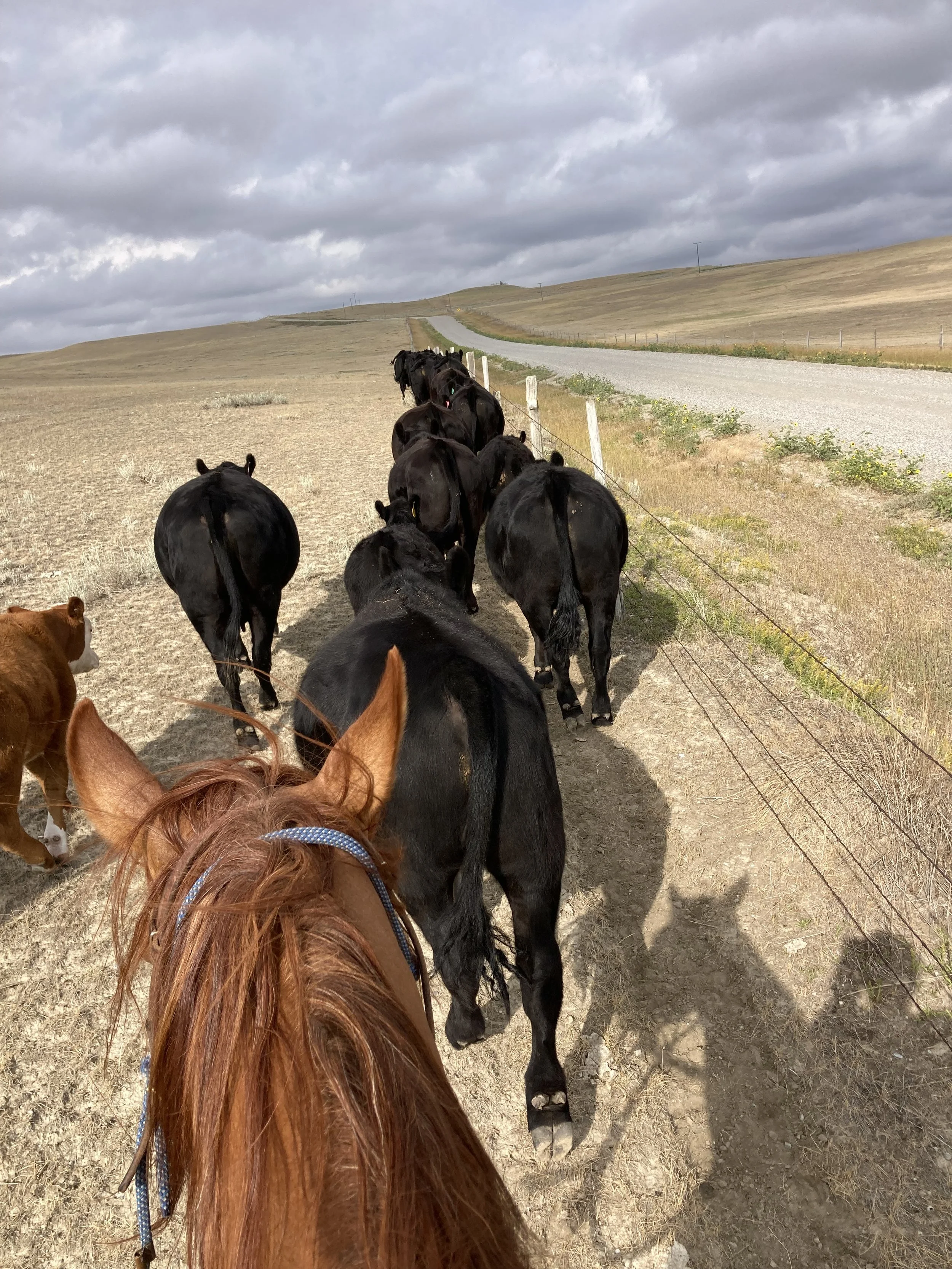The Artist
As I moved steers and cows from one pasture to the next, I thought about how natural animal behavior influences grazing as much as fences.
The steers kicked their heels in the air and butted heads, playing just like teenaged boys.
In a new pasture, they will roam farther from the water.
The cows in the bunch lumbered along, never expending more than minimal energy.
The cows and calves will graze the hilltops in the cool mornings, but tolerate the flies so they can stay in the coulees during the hot afternoons.
These aspects of natural animal behavior have not entered the conversations I’ve been having about grazing plans lately.
This is a problem.
Many experts offer various prescriptions for successful grass and soil management.
Some stick with a laisse faire “alfalfa can be cut short, but not often. Grass can be clipped often, but not short.”
Others swing in the opposite end of the spectrum to “move a huge mob of cattle through a small space twice a day.”
All of them justify their one-size-fits-all prescription with lots of data.
A one-size-fits-all prescription never works.
Rarely will I say “never,” but I have never seen a one-size-fits-all prescription work.
Never in economics, or health care or grazing management.
A one-size-fits-all prescription for grazing management doesn’t consider topography, seasonal livestock needs or changing weather patterns.
Nor does it consider how rangelands might vary through years.
A classic example is the half-mile radius beyond a source of water, drawn on a flat map.
Conventional wisdom says cattle will travel about a half mile from the water source, but any grass beyond a half mile will rarely be grazed.
That assumption is a good place to begin.
Planners need to start somewhere and typically they are not dumb.
But then the planner needs to check in with reality.
And art.
Maybe a coulee or a hill beyond the half mile will attract cattle.
Maybe yearlings who love to check fence lines will graze that pasture.
Maybe an ancient grove of Russian olive trees creates an attractive shady place.
Building a grazing plan based on a flat map and a protractor that draws a circle is management.
Caring for the land and animals is an art.
For a manager who wants to crowd cattle into a mob and move them twice a day, the idea of building pastures with a half-mile radius around water would impact far more than just the grass.
Working corrals and the amount of fencing come to mind immediately.
The map and protractor plan ignores the art of adjusting for real impacts, too.
Most people who move their cattle twice a day use electric fence.
This summer, they struggle to keep wayward bovines crowded because the soil is so dry that the ground wire doesn’t work so neither does the electric wire.
A stout perimeter fence will allow the manager to temporarily call “uncle” and revert to a workable plan.
Armchair quarterbacks holding their flat maps and protractors wonder why ranchers don’t follow a prescription.
Very few ranchers are dumb.
Instead, they are artists.
They don’t use pastels or pens.
They use their eyes and ears and experience to predict the unpredictable.
Which way will the wind blow?
Where will a cow choose to have a calf?
Will a snowdrift take out a cross-fence each and every year?
Can a tractor get to that pasture with a bale of hay?
What is the backup plan when the spring dries up?
Grazing needs a plan -- that is good management – but the plan should allow the art to shine.
I quit thinking about grazing to lope up and turn the playful steers through the gate, admiring their art in motion, too.
